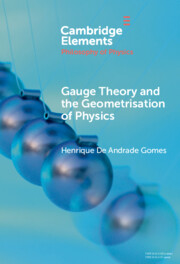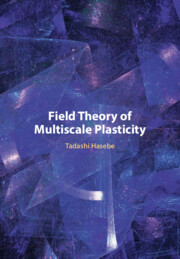Refine search
Actions for selected content:
3 results

Gauge Theory and the Geometrization of Physics
-
- Published online:
- 30 January 2025
- Print publication:
- 30 January 2025
-
- Element
- Export citation

Field Theory of Multiscale Plasticity
-
- Published online:
- 14 December 2023
- Print publication:
- 04 January 2024
LORENTZIAN GEOMETRY AND PHYSICS IN KASPAROV’S THEORY
- Part of
-
- Journal:
- Bulletin of the Australian Mathematical Society / Volume 93 / Issue 2 / April 2016
- Published online by Cambridge University Press:
- 21 January 2016, pp. 340-341
- Print publication:
- April 2016
-
- Article
-
- You have access
- Export citation
